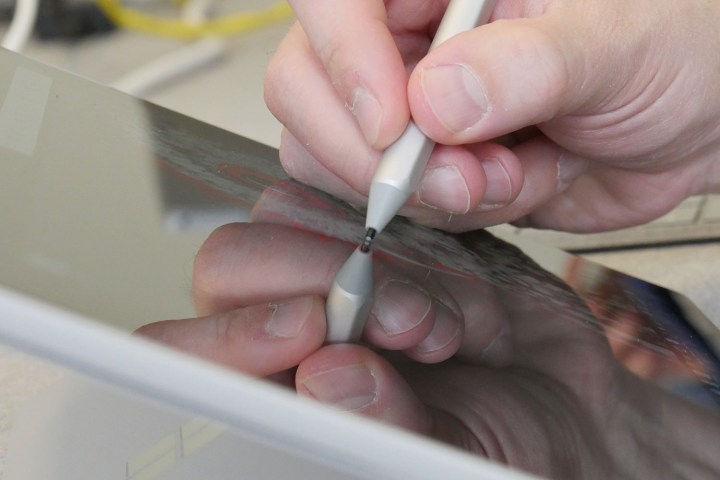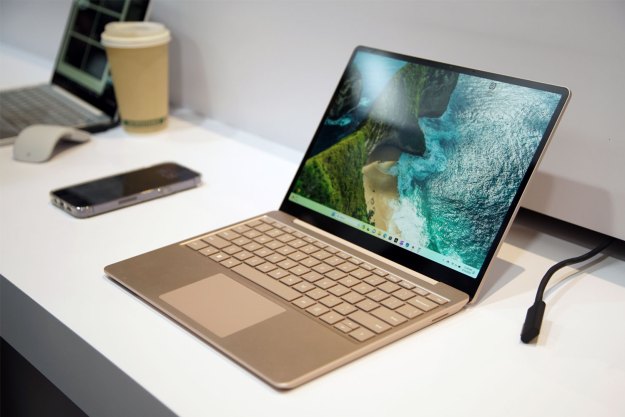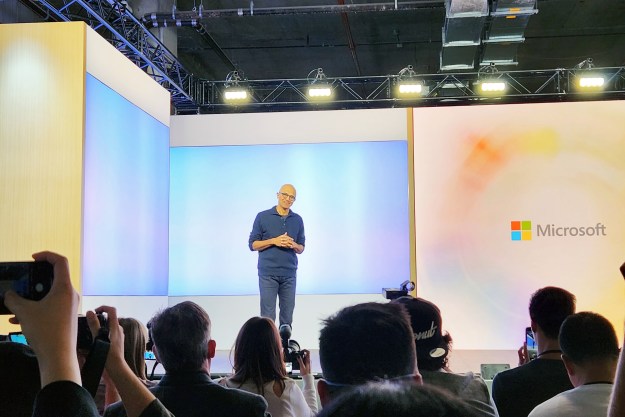
If you’re a fan of digital inking on Microsoft’s Surface line of computing devices, you may — in the future — never need to recharge your stylus or change its batteries again. Microsoft has filed a patent with the United States Patent and Trademark Office for a solar-powered stylus. The patent was initially filed at the end of 2016, but it’s unclear if Microsoft has any intentions of commercializing this idea in a future iteration of its Surface Pen.
Rather than using light from an external source, like the sun or a nearby lamp, Microsoft’s invention calls for a light collecting mechanism to be placed near the tip of the stylus to collect light emitted from the display when the stylus is being used. This way, the light that your Surface Pro‘s screen gives off could be harvested to power and recharge your Surface Pen. The light is sent via fiber optic cables positioned inside the barrel to a solar panel array on the inside of the pen, located at the end opposite its tip.
“The stylus collects light during interaction with the touchscreen, while the stylus is in close proximity to the touchscreen,” Microsoft wrote in its patent filing. “Due to the close proximity of the stylus to the touchscreen during harvesting, the intensity of light that is collected from the electronic display is significantly higher than intensity from ambient lighting in a room or from outdoor lighting.”
To maximize recharging efficiency, Microsoft said that the solar panels — used to convert the LED light given off from the touchscreen display into energy — could be optimized for the light wavelengths emitted from LED displays, rather than other types or sources of light. Higher intensity light — for instance, with a screen set to a higher brightness level — could lead to faster charge rates. Reflective surfaces inside the barrel of the stylus could also be used to help the solar panel absorb the greatest amount of light.

In another example, Microsoft showed a dock for a Surface Pen that allows the stylus to be positioned upright with the tip inside the dock. The dock also contains a small LED light that can be used to charge the stylus when it’s not in use.
What’s unique about Microsoft’s invention is that the solar panel is located on the interior barrel of the stylus, rather than on the exterior. This would allow the Surface Pen to maintain its clean and minimal aesthetics similar to today’s battery-powered counterpart.
Editors' Recommendations
- Microsoft’s next event could reveal the Surface Pro we’ve been waiting for
- Microsoft may fix the most frustrating thing about Windows updates
- I’m worried about the future of the Microsoft Surface
- Everything Microsoft didn’t announce at its 2023 Surface event
- Can you use the Surface Pen with the Surface Laptop Studio 2?


